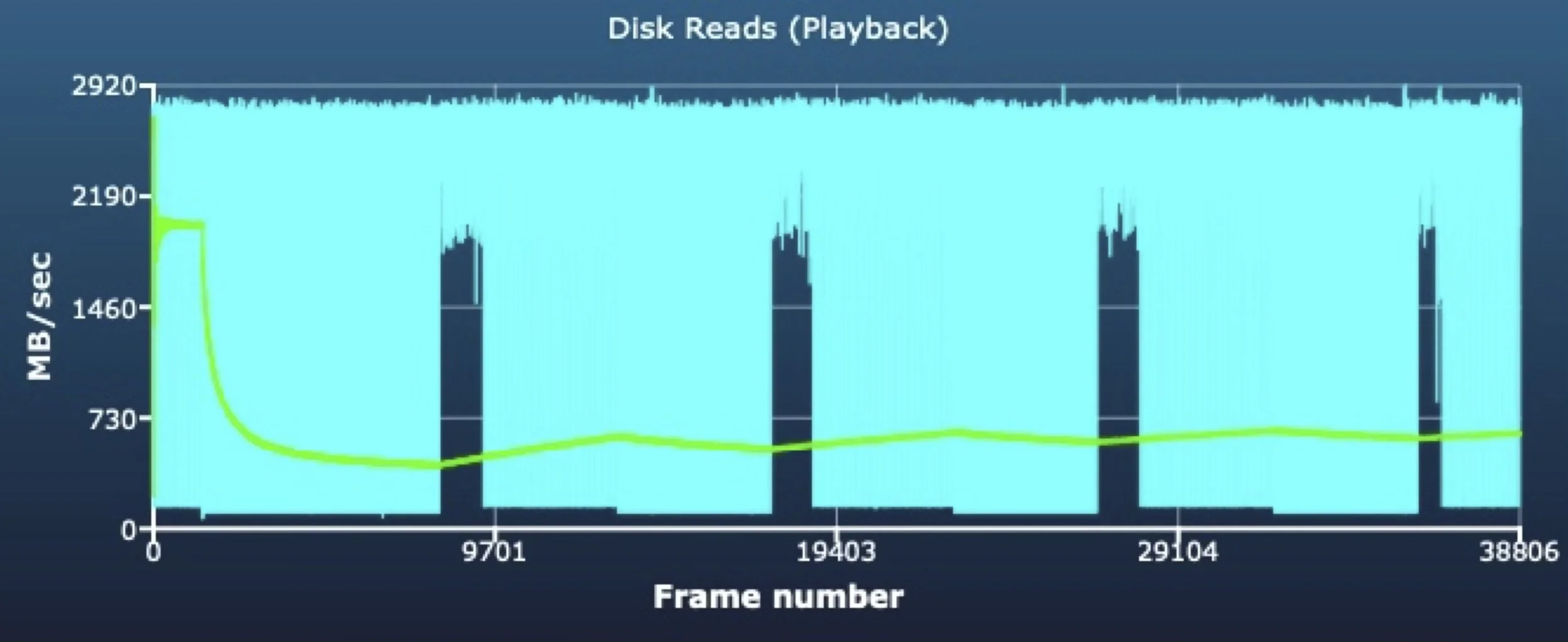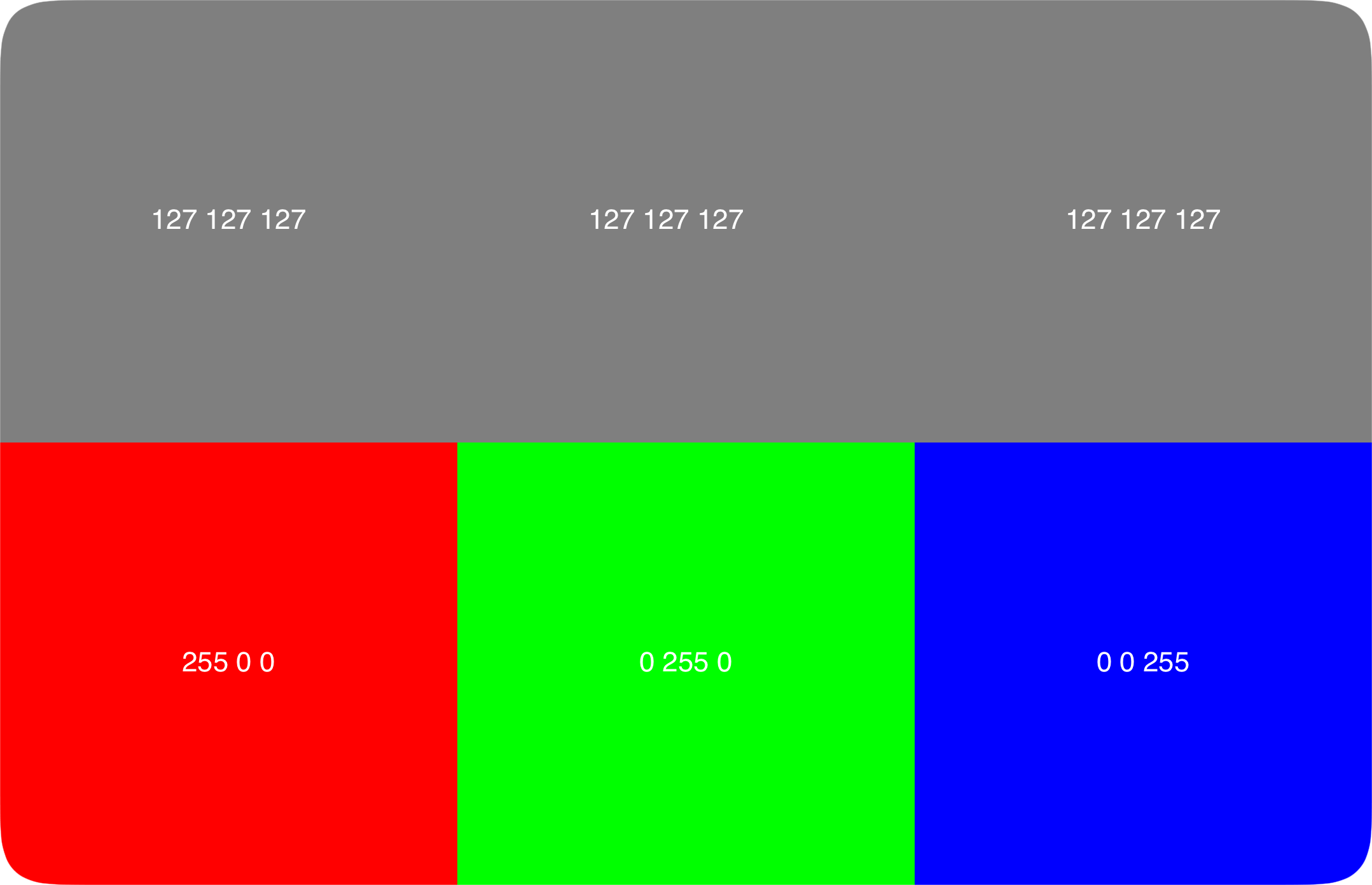Realistic CFexpress Data Rate
The Transcend 1TB CFexpress 900 Type B card takes advantage of PCIe 4.0 and has an advertised Read speed of 3500 MB/s and 2800 MB/s Write. To assume the device is capable of sustaining this speed throughout its 1TB capacity would be fair, but the reality is quite different.
The ultra fast advertised speed only lasts briefly due to built-in cache. A cache is a much smaller portion of the SSD’s capacity that can sustain very high speeds. So why can’t the entire SSD be made out of cache instead? Price. The suspiciously low $179 cost of this drive is possible because the majority of its space is made of cheaper QLC or Quad-Level Cell technology. Not all consumer level drives have this small of a cache. Samsung’s hyper popular 990 PRO sees a couple of Terabytes before slowing to QLC. Server and Enterprise solid state drives use SLC or Single-Layer Cell for the entire device but they run into tens of thousands of dollars.
Nikon Z6 III and the state of internal RAW
Perhaps the most anticipated midrange mirrorless camera of the year, the Nikon Z6 III launched today June 17, 2024 at 5am Pacific Time to a broad audience of enthusiasts and professionals alike.
Nikon Z6 III
6K60 N-RAW, 6K30 ProRes RAW
New Partially Stacked 24.3 MP Sensor
4000 nit EVF
Flippy screen
$2500
RAW
Internal RAW video recording in both N-RAW and ProRes RAW is the most sought after feature that thankfully became realized following months of rumors. For Dynamic Range and Rolling Shutter data we will wait for the results from our friends at CineD.
Internal RAW video mirrorless hybrid cameras as of June 2024.
Nikon Z9, Z8, Z6 III
Canon R3, R5
Panasonic GH7
No 32-bit Audio
Earlier this month on June 6, Panasonic released the GH7 that with an external unit can record 32-bit floating-point audio to internally recorded video on SDXC/CFexpress Type B cards. Unfortunately, the Nikon Z6 III sticks to 24-bit audio.
Bright EVF
Those who photograph mid-day know all too well the eye fatigue of your eye adjusting too quickly from a dim EVF to extremely bright sun and back. With a brighter 4000 nit EVF there is now less luminance difference.
Price
$2500 body or $3100 with 24-70 f/4 S kit lens (a $400 savings from the $1000 lens list price).
Future
Never too early to start thinking about cameras to come, here are some thoughts on what Nikon may/could release:
Z9 II / Z8 II: If Nikon decides that there are other important factors besides pushing higher megapixel count, we may see 14-bit RAW video and 16-bit RAW photo with a new 45 MP sensor and Dual Expeed 7/ Single Expeed 8 processor. Depending on the RED acquisition terms we may even see 16-bit RAW compressed internal video capabilities.
Z7 III: Unlike the Z6/7 and Z6/7 II releases, Nikon decided to not launch a Z7 III alongside the Z6 III. Though I have not seen the sales numbers, the Z6 range always seemed to garner more attention than the Z7, especially after the Z9 and Z8 unveilings. Besides a smaller form factor, a Z7 III with 8K60 N-RAW, 4000 nit EVF and partially stacked 45MP sensor would give slim reason to purchase a pricier Z8 instead. We may See an 8K30 N-RAW cap and $3000 price tag just to keep a line in the sand,
Z6 IV: Same 24MP resolution with full stacked sensor & global shutter. Too much to ask? on the current timeline we won’t see the Z6 IV until 2028. Looking at camera development from this perspective, it would be rather disappointing if global shutter wasn’t more widespread by our next decade.
Handling desaturation
Pixelmator 3.5.8 handles desaturation differently than Adobe Photoshop 25.6. Within PS, there’s the option of handling color with either the Adobe ACE Engine or Apple CMM Engine, whereas Pixelmator relies only on Apple CMM. Fortunately, switching between engines in Photoshop does not affect output.
The example below shows blocks of pure Red, Green and Blue on the bottom half and completely desaturated versions of them on the top half. With Photoshop, desaturating concludes with a middle grey value of 127 in the 8-bit sRGB color space and gamma.
Photoshop: Adobe ACE Engine & Apple CMM Engine
Oddly, Pixelmator desaturates each R, G, B square to a different middle grey value. Perhaps a fluke or perhaps to mimic the response our cones have to each wavelength - there’s no written evidence either way.
Pixelmator: Apple CMM Engine (presumably, since the application also relies on the Apple RAW engine.)
YouTube AV1 update March 2024
Official support for AV1 is now available on youtube.com —> Settings —> Playback and performance --> AV1 Settings. ‘Always prefer AV1’ is only recommended for chips with AV1 Hardware accelerated decode including:
Apple M3 and A17 Pro (iPhone 15 Pro)Samsung Galaxy S24 (Exynos 2400)Pixel 8 (Tensor G3)Intel Core Ulta, Core 14th GenAMD Ryzen 7
With the exception of AVC/HEVC 5K resolution when the iMac 5K was released, YouTube only supported up to 4K HDR in Safari under macOS, limiting 8K HDR to AV1 within Chrome. Now, up to 8K60 HDR AV1 is hardware accelerated with Apple M3 and takes virtually no toll on battery life or CPU usage.
RAW Engine Noise Reduction
RAW photos are as the name implies, an unprocessed form of an image at its most primary. Since these files need an engine to create a visible rasterized photo, you can imagine that just as there are many different photo editing Apps (Photoshop, Pixelmator, Lightroom etc…) there are many different RAW engines. This study will focus primarily on the handling of noise.
Right off the bat we see how drastically each RAW engine handles the same file. Capture One and Affinity Photo have their own custom built RAW engines that allow completely turning off both Luma and Chroma Noise Reduction while the built-in macOS RAW engine (which Pixelmator Pro also uses) has a preset amount reduction that cannot be modified.
Capture One: heavy grain and random speckles of different colors prove that no Luma or Chroma Noise Reduction is being applied. *Note: by default a small amount of Luma and Chroma noise reduction is applied but was disabled specifically for this test.
macOS Preview: The built-in Preview App applies strong Chrominance reduction as seen by the complete continuity of green across the leaf without dotes of variously colored noise, while Luminance reduction is about medium considering a grainy pattern is still thankfully visible.
macOS Quick Look: When you click on an image and tap space bar an enlarged window of the photo shows up; this is what Apple calls Quick Look. You would think this would be the exact same processing as the macOS Preview App but clearly that's not the case. The Apple development team has decided that customers want a squeaky clean image completely void of noise, which makes sense from a compression standpoint because file size is kept at bay but at the complete loss of any and all texture. The 1/3 stop less of exposure (darker image) could also be a tactic to keep noise down or simply a processing setting inconcetsincy.
Conclusion
Complete noise control of a RAW still image can only be had through a custom built RAW engine such as Capture One, Adobe Camera RAW or Affinity Photo.






